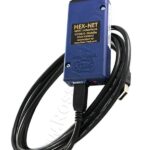A detailed DSG service procedure often circulates online, emphasizing the use of VCDS (VAG-COM Diagnostic System) for specific steps like activating the ATF (Automatic Transmission Fluid) pump and controlling fluid level. This raises the question: can a DSG service be performed without VCDS? This article explores the complexities of a DSG service and the role of VCDS in ensuring a successful procedure.
Understanding the DSG Service Procedure
A DSG (Direct-Shift Gearbox) service involves draining the old ATF, refilling with new fluid, and critically, ensuring the correct fluid level. The process is more involved than a simple drain and fill due to the DSG’s intricate design and reliance on hydraulic pressure. Key steps typically include:
- Draining the ATF: This often requires activating a specific function within the transmission control module (TCM) using a diagnostic tool like VCDS to release pressure and ensure complete drainage.
- Refilling the ATF: The correct type and amount of ATF must be used, following manufacturer specifications.
- Leveling the ATF: This crucial step requires precise temperature control and often involves activating the ATF pump using VCDS to circulate fluid and achieve the correct level. Overfilling or underfilling can lead to significant transmission problems.
The Role of VCDS in a DSG Service
VCDS allows access to the TCM, enabling specific functions crucial for a proper DSG service:
- ATF Pump Activation: VCDS allows technicians to activate the ATF pump, circulating fluid for accurate level checking. Without this, achieving the correct fluid level is challenging and potentially inaccurate.
- Pressure Release for Draining: VCDS can initiate a pressure release function, ensuring complete drainage of the old ATF. Skipping this step may result in residual fluid mixing with the new ATF, compromising performance.
- Monitoring Fluid Temperature: Precise temperature is crucial for accurate fluid level measurement. VCDS displays real-time transmission fluid temperature, ensuring the measurement is taken within the manufacturer-specified range.
- Fault Code Reading and Clearing: Before and after the service, VCDS can scan for fault codes, identifying potential issues and confirming the successful completion of the service.
Can it be Done Without VCDS? The Risks and Challenges
While some mechanics claim to perform DSG services without VCDS, attempting this carries significant risks:
- Inaccurate Fluid Level: Without activating the ATF pump and precisely monitoring temperature, achieving the correct fluid level is highly unlikely. This can lead to poor shifting performance, damage to the transmission, and potential failure.
- Incomplete Fluid Drainage: Without the pressure release function accessible through VCDS, old fluid may remain in the system, contaminating the new ATF.
- Undiagnosed Issues: Without fault code scanning capabilities, pre-existing or service-induced issues may go unnoticed, potentially causing further damage.
Conclusion: VCDS is Highly Recommended
While theoretically possible to attempt a DSG service without VCDS, the risks associated with inaccurate fluid levels, incomplete drainage, and undiagnosed issues significantly outweigh the potential cost savings. Using VCDS ensures a proper and complete service, protecting your DSG transmission from potential damage and maintaining optimal performance. Investing in a professional service using VCDS is highly recommended for long-term transmission health and reliability.

